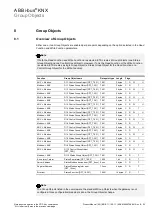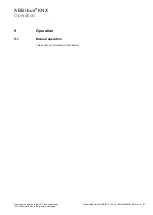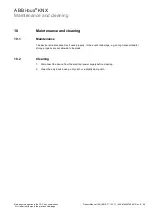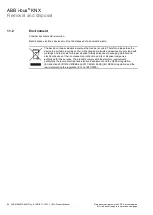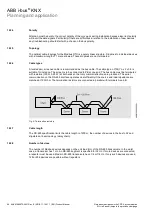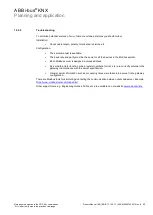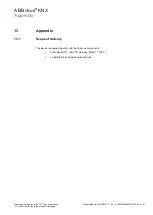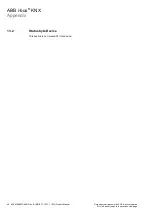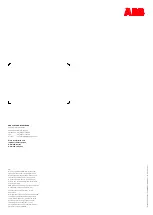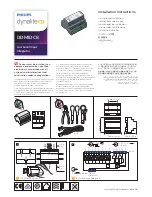
ABB i-bus
®
KNX
Planning and application
Note about navigation in the PDF: Key combination
Product Manual | EN | MG/S 11.100.1.1 | 9AKK108467A5941 Rev. B 63
'Alt + left arrow' jumps to the previous view/page
12
Planning and application
12.1
Priorities
This section is not relevant for this device.
12.2
Basic knowledge
12.2.1
General Modbus RTU/RS-485 information
This section describes the basics of planning and installing Modbus systems.
You will find further information in the Modbus documentation/specification:
12.2.2
What is Modbus?
Modbus is a serial communication protocol that was developed and published for use with programmable
logic controllers (PLC). It is a communication method for the transmission of information via serial cables
between electronic devices. The device that requests the information is termed the client. The devices that
send information are servers. In a standard Modbus network there is one client and up to 255 servers each
with a unique server address from 1 to 255. Address 0 is reserved for the client.
12.2.3
Bus principle RS-485
The Modbus standard uses the RS-485 standard. This standard defines the physical layer of the Modbus
interface. The data are transmitted in serial form via a 2-wire bus (RS-485). The RS-485 standard is based
on the client-server method and defines the bus cable as a cable with a start and an end that are each
terminated using an EOL resistor RT (T=Termination).
Client = Level Converter (e.g. MG/S 11.100.1.1 Modbus KNX Gateway)
Server = Modbus RTU device (e.g. ABB electricity meter from the A and B series, water meter, heat meter,
gas meter, etc., with Modbus RTU interface).
Fig. 8: Bus principle RS-485
9A
K
K
10
846
4A
055
0





